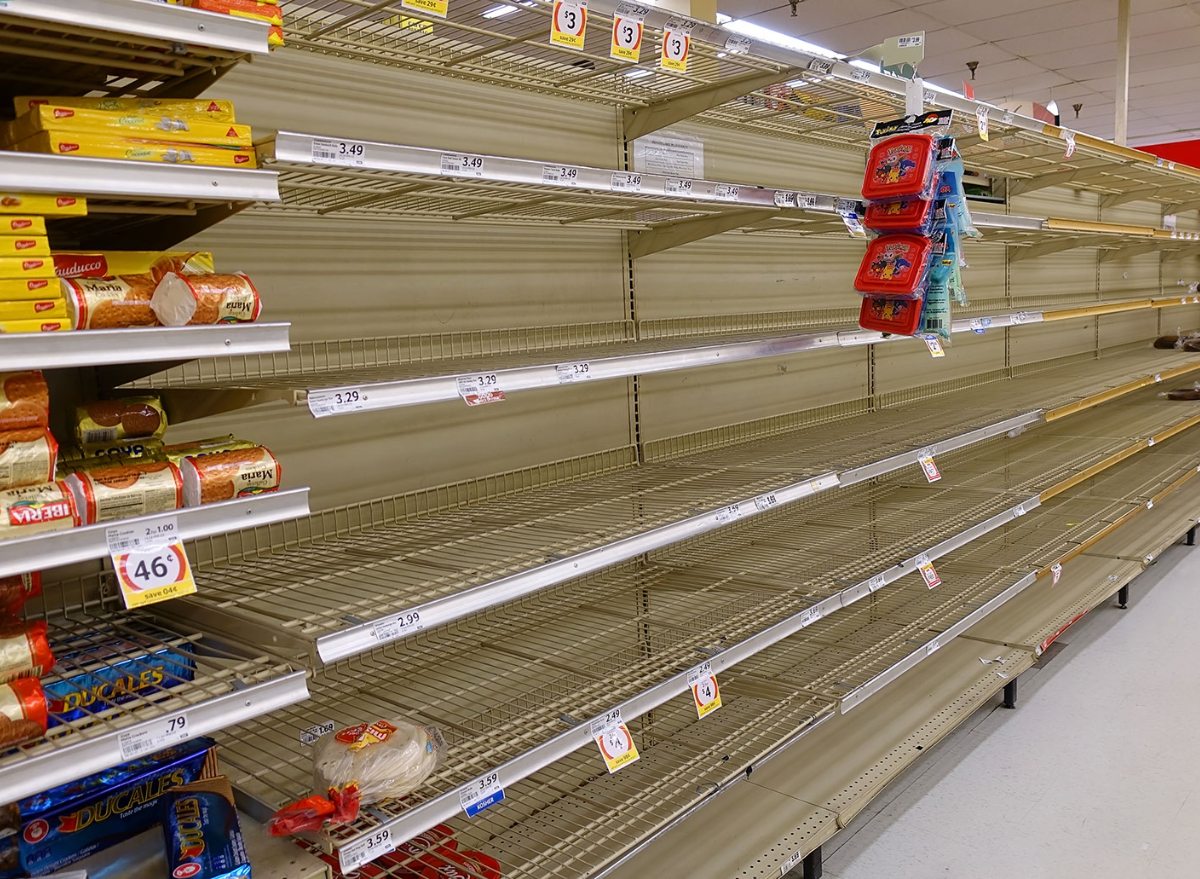Sorry, nothing in cart.
Here’s why grocery stores are struggling to stock their empty shelves
- By michael@cvcteam.com
- |
Grocery store shelves across America are wiped clean, and they’re staying empty as stores struggle to quickly restock everyday necessities such as milk, bread, meat, canned soups and cleaning products.
Disgruntled shoppers have unleashed their frustration on social media over the last several days, posting photos on Twitter of bare shelves at Trader Joe’s locations, Giant Foods and Publix stores, among many others.
After contending with two years of a pandemic and supply chain-related problems, grocery stores still aren’t getting the break they had hoped for. Rather, they are now confronting a host of other setbacks.
Omicron’s devastating blow
As the highly contagious variant of the Covid-19 virus continues to sicken workers, it’s creating staffing shortages for critical functions like transportation and logistics, which in turn are affecting delivery of products and restocking of store shelves across the country.
Albertsons’ CEO Vivek Sankaran acknowledged that products are in tight supply during the company’s earnings call with analysts Tuesday. “I think as a business, we’ve all learned to manage it. We’ve all learned to make sure that the stores are still very presentable, give the consumers as much choice as we can get,” Sankaran said during the call. Even so, he added, Omicron has put “a bit of a dent” on efforts to improve supply chain gaps. “We would expect more supply challenges over the next four to six weeks,” Sankaran said.
Grocery stores are operating with less than their normal workforces, according to the National Grocers Association, and many of its members have less than 50% of their normal workforce.”While there is plenty of food in the supply chain, we anticipate consumers will continue to experience sporadic disruptions in certain product categories as we have seen over the past year and half due to the continued supply and labor challenges,” said Greg Ferrara, the group’s president and CEO.
In fact, labor shortages continue to pressure all areas of the food industry, said Phil Lempert, an industry analyst and editor of SuperMarketGuru.com.
“From farms to food makers to grocery stores, it’s across the board,” said Lempert. “During the pandemic, these operations have had to implement social distancing protocols and they’re not really built for that and it has impacted production.”
And as the pandemic continues, many food industry workers are opting not to return to their low-wage jobs at all.
Transportation problems
An ongoing shortage of truckers continues to slow down the supply chain and the ability of grocery stores to replenish their shelves quickly.

“The trucking industry has an aging workforce on top of a shortage,” Lempert said. “It’s really been a problem for the last several years.”
Layered atop widespread domestic transportation issues is the ongoing record-high level of congestion at the nation’s ports. “Both of these challenges are working in tandem to create shortages,” he said
Weather issues
At Trader Joe’s stores, shoppers over the weekend saw messages attached to empty shelves blaming weather emergencies for delivery delays.
Much of the Midwest and Northeast has recently been grappling with severe weather and hazardous commuting conditions. Not only are people stocking up on more groceries, that level of high demand coupled with transportation challenges is making it more difficult to transport goods in inclement weather, thus resulting in more shortages, said Lempert.
Not to mention climate change, which is an ongoing serious and longer term threat to food supply. “Fires and droughts are damaging crops such as wheat, corn and soybean in the US and coffee crops in Brazil,” he said. “We can’t ignore it.”
Pandemic changed our eating habits
More and more of us have taken to cooking and eating at home through the pandemic that’s contributing to the grocery supply crunch, too, said Lempert.
“We don’t want to keep eating the same thing and are trying to vary home cooking. As we do that, we’re buying even more food products,” he said. The shortages have also made buying food increasingly more expensive going into 2022.
Grocery stores certainly are aware of the empty shelves, Lempert said, and they are trying to mitigate panic buying, which only worsens it the situation.
One strategy: Fanning out products. They’re doing this by putting out both limited varieties and limited quantities of each product in an attempt to prevent hoarding and stretch out their supplies between deliveries.
“Pre-pandemic you might have seen five different varieties of milk across the front row and 10 cartons deep. Now it will be five across and maybe two rows deep,” said Lempert.


Leave a Reply